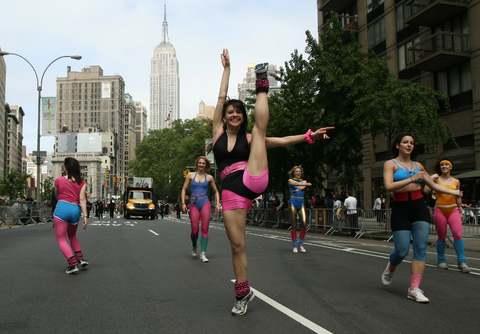Hey kids, clear the dancefloor; the older dancers aren’t ready to sit down yet.
By Paul Ransom.
It’s like that old disco song: I haven’t stopped dancin’ yet …
Dance, like sport, is reckoned to be a young person’s pursuit. And like sport, if you haven’t cracked the elite level by the time you hit twenty you are most likely to ‘retire’. Trained dancers move into teaching or other careers and recreational shakers give up clubbing and settle into more sedate pursuits. How often do you hear someone say: ‘oh, I used to love dancing’?
And who ever heard of dancers over forty?
Luckily, those of us no longer in the first flush of youth don’t have to be Margot Fonteyn in order to keep dancing. Indeed, there is evidence of a groundswell of ‘mature movement’, of people wanting to age with a little more … well, grace.
Sherry Zunker, founder and CEO of BeMoved Dance, a Chicago based ‘school’ for the older mover, is just one of those pushing the dance envelope for adults. “So many aspects of your well being are improved,” she states emphatically. “Physically, you gain more strength, more flexibility and more coordination. You will be challenged mentally, having to use parts of your brain to learn and remember new movements. Emotionally, you will feel better and relieve stress. You will also realise how much you can still learn and do.”
On the other side of the world in Melbourne, Australia Dianne Harrison heads up the Elance Adult Ballet School. Forced to abandon her own professional dance career at a young age, (“my body was not perfectly designed for ballet”), she drifted outside the scene for many years until she chanced upon an adult class above a suburban video store. Six months later she had started her own school and now has students as old as seventy getting to grips with the technique and discipline of ballet.
“We are not attempting to turn people into professional dancers; we are looking to help them be the best dancers that they can be with the body that they have right now,” she declares.
In addition to a steady stream of ‘returning’ dancers, Harrison also takes on novices. “From a teaching perspective, I cannot tell you how rewarding it is to see someone who has stepped into the studio never having done ballet before grow to become what I would confidently describe as a competent dancer. That is just magnificent to see.”
Apart from the obvious body benefits, there is the undeniable ‘high’ and massive self esteem boost you get from good dancing. “There is also a sense of camaraderie and community that develops between the class participants, regardless of their past dance experience,” adds Sherry Zunker.
Whereas you might expect novices to love the buzz of new skills and new friends, for former professionals and other trained dancers the rewards take on a slightly different complexion. Perhaps this is what drove a group of ‘Broadway gypsies’ in the mid-90s to create Dancers Over 40, a group that has now spread well beyond its NYC origins and boasts members in the UK, Europe and Australia.
As DO40’s president John Sefakis notes, “There’s a saying we love to use: ‘once a dancer, always a dancer’. You never stop being a dancer because your extension or your turns are not what they used to be. They still call a doctor a doctor no matter if they’re 28 or 88. Why should being a dancer be any different?”
With a membership made up entirely of former working dancers, DO40 actively celebrate and promote the experience and skill base of mature artists. With their YouTube channels and Facebook pages blaring at full volume, they work tirelessly to create job opportunities, produce shows and put on social events.
“At DO40 we are very conscious of our responsibility to continue recording the history, legacy and lives of mature dancers; and to reach out to those dancers about to begin their journey,” Sefakis explains.
The idea that dance is a lifelong odyssey, whether for artistic, social or fitness reasons is enshrined in the core philosophy of Move Through Life, a dance company based in Adelaide, Australia. Since its inception in 2004, the company has mounted five full productions and branched out into public classes and a choreographic programme called Expand; and all by engaging dancers from beyond the narrow professional mainstream.
Says Artistic Director Jo McDonald, “I don’t think it’s too much to say that dance has a profound emotional impact on the dancer. It’s liberating in a way that’s maybe hard to put into words but very easy to understand through movement; and I can’t think of a single reason other than serious injury to ever retire.”
Back in the USA, Sherry Zunker picks up this thread. Of the returning dancers who attend BeMoved sessions she observes, “they get a part of their core identity back. It can truly feel like returning to your homeland tribe; and as they experience it again they can’t believe they’ve robbed themselves of dance for so long. They get to redefine their relationship with dance and go back to just loving the feeling of it without self criticism.”
After all, if aging rock bands are allowed to get away with it, surely dancers should be applauded for keeping the pointes pointy, the tutus terrific and moves bustin’.
Think I’m gonna dance now …
Photo: © Shiningcolors | Dreamstime.com
Published by www.danceinforma.com

















